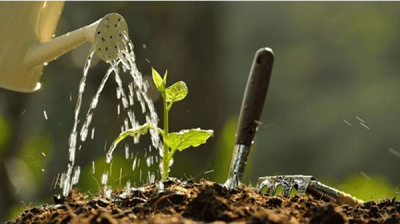Design Tips for Improving Your Master Bedroom
Your bedroom should be more than just a place to lay your head. It should serve as a refuge, a comfort, and a respite from the rest of the world. If...
First Federal Bank will never call, text, or email you to ask for your online banking username, password, or security codes. If you receive a call from someone requesting this information, do not provide it. Call 877-499-0572 for assistance.
Manage your everyday finances with convenient accounts, flexible cards, and personalized service designed to fit your life.
At First Federal Bank, we offer flexible mortgage solutions for almost any situation, helping you secure the right financing for your dream home.
Business banking offers secure financial management, streamlined transactions, credit options, and tools to help businesses grow efficiently and sustainably.

 Gardening doesn’t have to break your back and your budget. With a container garden, you can enjoy the literal fruits of your labor without spending a fortune, having a large tract of land, or spending hours in the sun tending to your crops. Whether you’re looking to grow fresh herbs on your balcony, or spruce up your front porch with a splash of natural beauty, here are some tips to nip your container gardening troubles in the bud:
Gardening doesn’t have to break your back and your budget. With a container garden, you can enjoy the literal fruits of your labor without spending a fortune, having a large tract of land, or spending hours in the sun tending to your crops. Whether you’re looking to grow fresh herbs on your balcony, or spruce up your front porch with a splash of natural beauty, here are some tips to nip your container gardening troubles in the bud:
Choose a good container
You can grow plants in virtually any container, ranging from old wooden barrels to traditional terracotta pots. However, Better Homes and Gardens has a few guidelines to help you pick the right pot.
First, consider drainage — while water is important for plant growth, too much standing water can drown the roots and lead to root rot. Most planters contain drainage holes, but if you’re using an alternative container, you’ll have to poke some holes in the bottom to release the excess water. Also, keep in mind terracotta releases moisture better than plastic, so it’s better for gardeners who worry about overwatering. Similarly, dark-colored pots absorb more heat from the sun, so if you’re already in a warm climate, a dark pot could cause your plants to wilt from overheating.
Second, size matters when it comes to picking a planter. If you’re a beginner, bigger is actually better. That’s because larger pots give your plants room to grow and are less finicky with moisture requirements. Small pots, on the other hand, can dry out quickly or become waterlogged on accident. The optimal size for a container should be around 12 inches deep and 10 inches wide. If you think you’ll want to transport your prized plant indoors for the winter, consider investing in a wheeled base, since the filled pot itself may be too heavy to lift.
And finally, if you’re using a non-traditional container like a wooden crate, ensure it hasn't been treated with chemicals that can infiltrate your produce. For instance, wood treated with arsenic bears an L-P22 stamp, which indicates that it isn’t fit for use in your garden.
Potting soil makes the difference
Not all soil is created equal. For the sustained growth and health of your plants, it’s important to choose high-quality potting soil to ensure your plants get the nutrients they need. Seed starting mix, fill dirt, and peat moss don’t contain the nutrients your plants need to thrive. Also, read up on your chosen plant’s soil requirements — some need constant moisture, others prefer well-drained dirt, and some species need acidic soil. If your plant has specific needs, consider picking up a soil amender or some plant food to help it stay healthy.
Pick the right plants for your setup
Do your research on plant varieties and needs before you head out to your local nursery. For instance, if you’re looking to grow some cherry tomatoes on your patio, pick a determinant variety of tomatoes. These plants grow to a fixed size so you don’t find yourself overwhelmed. Also, consider the sunlight and water requirements of your plants. Many herbs require full sun, and many plants that produce fruits require access to pollinator insects during their blooming phase — meaning they can’t fully be grown indoors. Salad greens, on the other hand, may do well indoors, since they can easily fall prey to parasites and don't require pollination to make delicious produce.
Need guidance on setting up your container garden? Speak with the crew at your local nursery or head online to check out some gardening blogs for helpful how-to tips.

Your bedroom should be more than just a place to lay your head. It should serve as a refuge, a comfort, and a respite from the rest of the world. If...

Your credit report holds plenty of valuable information. It can help you understand your spending habits, lend insight into your creditworthiness,...

Whether you’re on a fixed income or simply looking to make smarter financial decisions, a budget can help you guide your spending and supplement your...
Manage your accounts, make payments, and more.
Open an account with us.